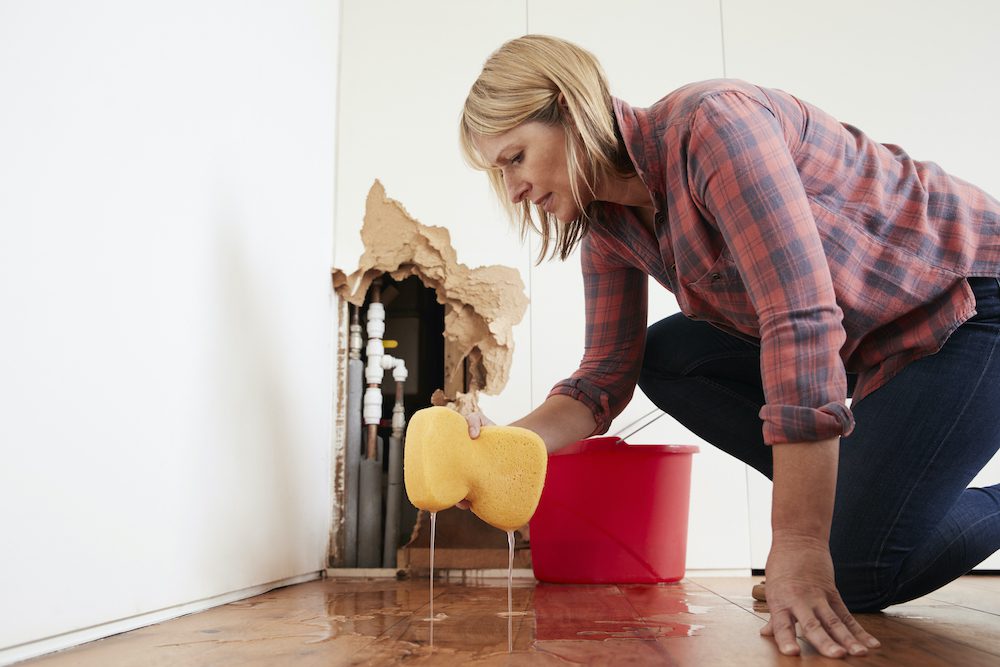Overview To Water Leakage Detection At Home
Overview To Water Leakage Detection At Home
Blog Article
Do you find yourself looking for help about Detecting hidden plumbing leaks?

Early detection of dripping water lines can reduce a potential catastrophe. Besides conserving you cash, it will certainly decrease the aggravation and stress. The minute you locate a leakage, calling your plumber for repairs is the best service. However, some tiny water leaks might not show up. If you can not detect it with your nude eyes, right here are some hacks that aid.
1. Analyze the Water Meter
Examining it is a surefire way that aids you discover leakages. If it relocates, that suggests a fast-moving leakage. This means you may have a sluggish leak that could also be below ground.
2. Check Water Consumption
Analyze your water costs and track your water intake. As the one paying it, you should notice if there are any kind of disparities. If you identify sudden changes, despite your usage being the same, it means that you have leakages in your plumbing system. Bear in mind, your water bill need to drop under the very same range monthly. An unexpected spike in your expense suggests a fast-moving leakage.
At the same time, a steady increase each month, even with the same routines, shows you have a slow leak that's additionally slowly escalating. Call a plumber to extensively inspect your residential or commercial property, particularly if you feel a cozy area on your flooring with piping underneath.
3. Do a Food Coloring Examination
When it involves water consumption, 30% originates from commodes. Examination to see if they are running effectively. Drop specks of food shade in the container and wait 10 minutes. If the shade somehow infiltrates your dish during that time without flushing, there's a leak in between the storage tank and bowl.
4. Asses Exterior Lines
Don't forget to examine your exterior water lines also. Test faucets by attaching a yard hose pipe. Should water permeate out of the connection, you have a loose rubber gasket. Change this and also make certain all connections are limited. It will certainly help get it skillfully examined and maintained every year if you have actually obtained a lawn sprinkler system. One little leakage can lose tons of water as well as increase your water costs.
5. Examine and Assess the Scenario
Property owners need to make it a habit to examine under the sink counters and also even inside cabinets for any type of bad odor or mold and mildew growth. These 2 red flags indicate a leak so punctual focus is called for. Doing routine evaluations, even bi-annually, can conserve you from a major problem.
Inspect for discolorations and deteriorating as many pipelines as well as appliances have a life expectations. If you suspect leaking water lines in your plumbing system, don't wait for it to intensify.
Early detection of leaking water lines can alleviate a potential disaster. Some small water leaks might not be visible. Inspecting it is a proven means that helps you find leakages. One little leakage can waste lots of water and increase your water expense.
If you believe leaking water lines in your plumbing system, do not wait for it to escalate.
WARNING SIGNS OF WATER LEAKAGE BEHIND THE WALL
PERSISTENT MUSTY ODORS
As water slowly drips from a leaky pipe inside the wall, flooring and sheetrock stay damp and develop an odor similar to wet cardboard. It generates a musty smell that can help you find hidden leaks.
MOLD IN UNUSUAL AREAS
Mold usually grows in wet areas like kitchens, baths and laundry rooms. If you spot the stuff on walls or baseboards in other rooms of the house, it’s a good indicator of undetected water leaks.
STAINS THAT GROW
When mold thrives around a leaky pipe, it sometimes takes hold on the inside surface of the affected wall. A growing stain on otherwise clean sheetrock is often your sign of a hidden plumbing problem.
PEELING OR BUBBLING WALLPAPER / PAINT
This clue is easy to miss in rooms that don’t get much use. When you see wallpaper separating along seams or paint bubbling or flaking off the wall, blame sheetrock that stays wet because of an undetected leak.
BUCKLED CEILINGS AND STAINED FLOORS
If ceilings or floors in bathrooms, kitchens or laundry areas develop structural problems, don’t rule out constant damp inside the walls. Wet sheetrock can affect adjacent framing, flooring and ceilings.
https://www.servicemasterbyzaba.com/blog/how-to-detect-water-leakage-in-walls/

Do you really like reading up on Finding hidden leaks? Post a comment below. We'd be glad to hear your suggestions about this page. We are looking forward to see you back again later on. Sharing is good. One never knows, you may be doing someone a favor. I take joy in reading our article about Finding hidden leaks.
Report this page